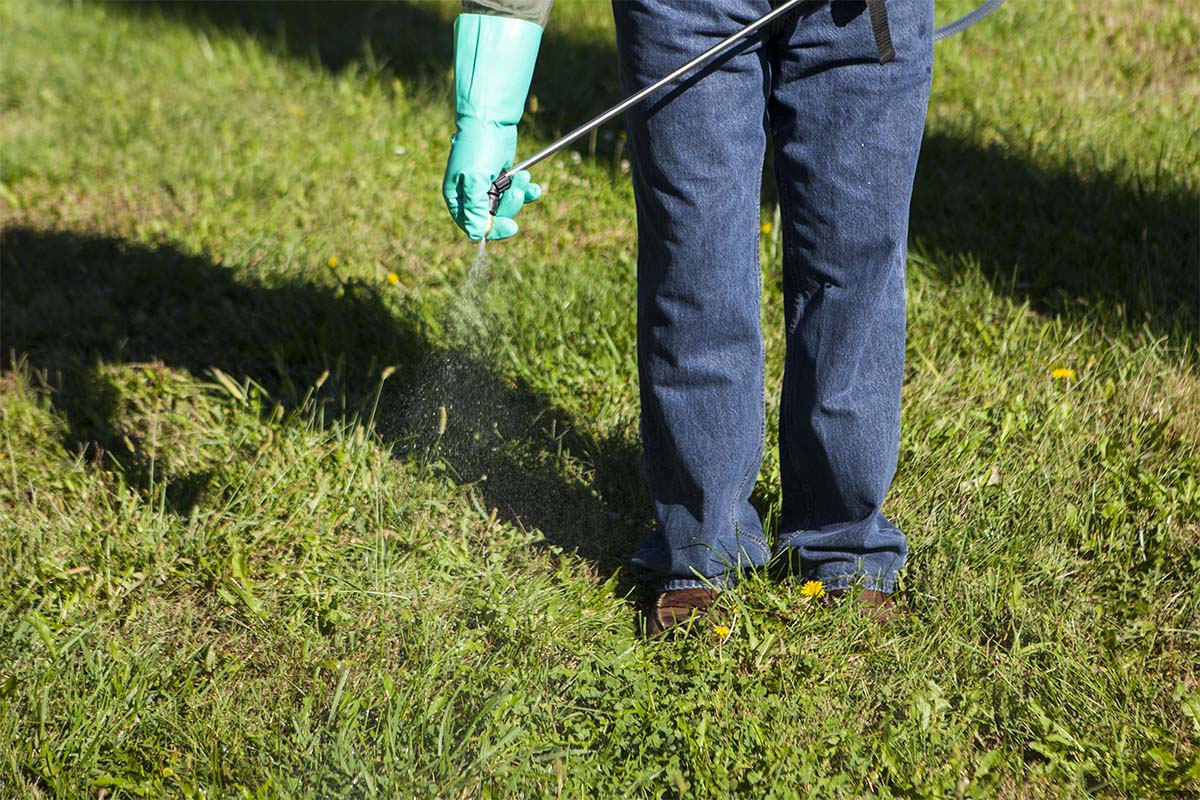A healthy green lawn is what most of us strive for and fall is a critical time to prevent weeds that can pop up and cause problems in winter and spring.
Common weeds like Chickweed, poa annua (annual bluegrass), clover and filaree can all germinate in the winter and emerge lawn between late February and early March.
The problems posed by these weeds aren’t just about looks. For residential and commercial lawns, having weeds can negatively impact property values. On golf courses, weed infested greens can increase the unpredictability of the putt, adding extra challenges to the already tough game. For sports fields and parks, weeds can also create dangerous bare spots, erosion and drainage problems.
Weeds can also quickly get out of control. Their seeds can be blown in the wind or thrown by a lawn mower and take over a yard practically overnight. Luckily, there are a variety of ways to attack this seemingly never-ending problem.
Step 1. Identify the weeds
Identifying the weeds you are faced with is a key element of treating turf. The two groups used to identify weed types are “broad leaf weeds” and “grassy weeds.” Once you understand what type of weed to treat for, you will be better equipped to develop a plan to manage it.
The presence of certain weeds can also indicate other potential problems in the landscape that may need to be addressed:
- Dollarweed thrives in moist, shady environments, so this may be a sign of overwatering
 Poa annua often grows in moist, compacted soils.
Poa annua often grows in moist, compacted soils.
- White clover can often be found in low nitrogen soils and where lawns are thin
- Prostrate knotweed can indicate dry, hard-packed soil
- Poa annua can indicate overwatering and compacted soil
If you aren’t sure what weeds you’re dealing with, snap a few pictures to bring into your local Ewing and we can likely help identify what you’re facing. Many universities also provide information online about common weeds in their area.
Step 2: Know your turf type
Many herbicides are also categorized for either warm-season or cool-season turf grass use or specific turf types, so make sure you identify the type of turf you are treating.
Step 3: Select your herbicide
 With dozens of herbicides on the shelves, knowing which one to use is important for efficiently managing weed growth and germination.
With dozens of herbicides on the shelves, knowing which one to use is important for efficiently managing weed growth and germination.
Herbicides can be selective, meaning they can kill specific weeds, or non-selective which means they kill or injure all plant life. For preventing weeds in turf, you’ll need a selective herbicide that can be used on your turf type.
Next, look for the pre-emergent herbicides. These are the most common types used on turf and they help prevent the germination of weed seeds before they emerge. (Post-emergent herbicides on the other hand, can be used to treat weeds that already growing.)
Next, always read the herbicide label for proper use instructions—where you can use it, how much to use, how to apply it and when.
Step 4: Time Your application right
The ideal time to apply fall pre-emergent herbicides is between August and November, for both cool and warm season grasses. In the fall, it’s critical to time your application early enough to prevent winter annual weeds. This is typically when outside temps are below 85 degrees and soil temperatures are at about 70-degrees, but always read the herbicide label for application instructions!
If you plan to overseed in the fall, you should also read the herbicide label instructions before applying. Some pre-emergents need to be applied weeks or months before or after overseeding so it doesn't interfere with turf seed germination.
Stay ahead of weeds
If you are dealing with many types of weeds, you may need to use a variety of herbicides and turf care practices to get them under control and your local Ewing can help you identify some options.
There’s a common saying, “Only bad turf leads to weed infestations,” but this isn’t a universal truth. Many weeds are adapted to bad agronomic conditions, but they can also thrive in good agronomic conditions as well.
One thing is true—weeds aren’t going away! So use these steps to know what to look for, stay ahead of the game and be thorough for greener, weed-free grass all-year long.




